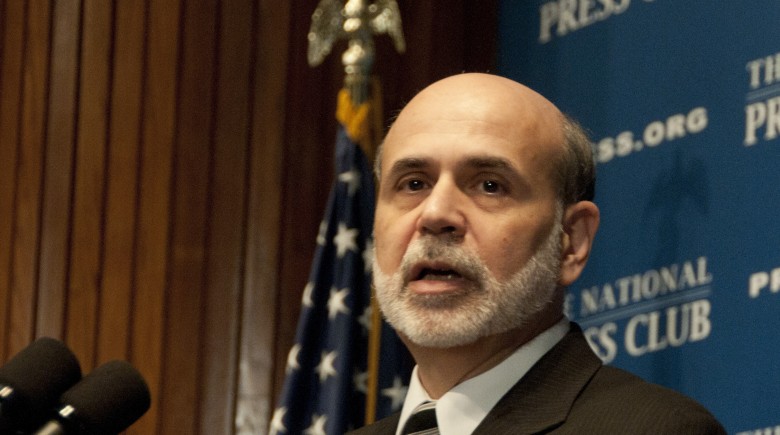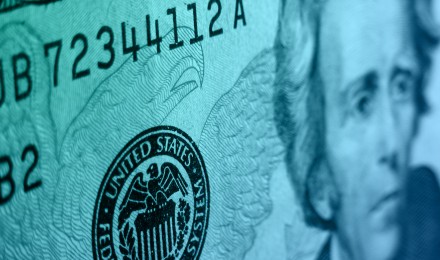While some regional Fed bank presidents want to scale back the Fed’s bond buying program in response to a string of positive data, Federal Reserve Chairman Ben S. Bernanke warns against a” premature tightening of monetary policy.” Saying that government spending cuts, high unemployment remains obstacles for the struggling economy reducing bond purchases and raising interest rates would hamper the nation’s economy
Bernanke, in Washington D.C. testifying before the Joint Economic Committee of Congress, states that the policy changes could cause a “temporary” increase in historic low interest rates. However, the effects “would carry a substantial risk of slowing or ending the economic recovery and causing inflation to fall further.” He went on to say that the current monetary policy is returning “significant benefits.”
Unemployment rate the key
Beginning in late 2008, the Fed embarked on one of the most aggressive economic stimulus policies in its 100 year history. Since December 2008, the Fed has kept the federal funds rate– the overnight cost for banks to borrow money to meet their mandated cash reserve requirements– near zero.
The Fed quantitative easing policies are intended to help grow the economy and encourage companies to hire more workers. However, the unemployment rate sits at 7.5 percent it’s a full percentage point higher than the Fed’s goal of 6.5 percent.
Bernanke acknowledges the “improvement” in the job market, but labels the significant levels of unemployment and underemployment as “extraordinarily costly” to the country. He points to individual hardship place on individuals and the family unit.
In addition, it has a devastating effect of domestic production because it causes “eroding worker skills.” Bernanke also said that it causes issues for people graduating from college have as they have problems “gaining workplace skills and experience in the first place.”
By maintaining record low interest rates, which manifest in the form of lower borrowing costs for consumers and businesses, the Fed claims it makes more disposable income available for consumers to spend and encourages more companies to hire and pay dividends.
Changing course
The chief economist of Wrightson ICAP LLC (New Jersey) Lou Crandall says the Fed wants to discourage any talk that reducing bond purchases signifies the end of the rod for the program. Crandall states that the Fed is months away from making a move to scale back the program and will closely monitor inflation. Crandall states that the Fed wants to ensure a solid home-buying season and allow the full effects of recent fiscal policies to filter through the economy.
In a statement made earlier this month, the Federal Open Market Committee said that it plans to adjust the scale of the $85 billion a month program—more or less— based on it “outlook for the labor market or inflation changes.” On May 9, 2007, the Fed had a portfolio size of $879 billion. With it quantitative easing programs, it has since expanded the balance sheet to $3.35 trillion
While some regional Fed bank presidents want to scale back the Fed’s bond buying program in response to a string of positive data, Federal Reserve Chairman Ben S. Bernanke warns against a” premature tightening of monetary policy.” Saying that government spending cuts, high unemployment remains obstacles for the struggling economy reducing bond purchases and raising interest rates would hamper the nation’s economy
Bernanke, in Washington D.C. testifying before the Joint Economic Committee of Congress, states that the policy changes could cause a “temporary” increase in historic low interest rates. However, the effects “would carry a substantial risk of slowing or ending the economic recovery and causing inflation to fall further.” He went on to say that the current monetary policy is returning “significant benefits.”
Unemployment rate the key
Beginning in late 2008, the Fed embarked on one of the most aggressive economic stimulus policies in its 100 year history. Since December 2008, the Fed has kept the federal funds rate– the overnight cost for banks to borrow money to meet their mandated cash reserve requirements– near zero.
The Fed quantitative easing policies are intended to help grow the economy and encourage companies to hire more workers. However, the unemployment rate sits at 7.5 percent it’s a full percentage point higher than the Fed’s goal of 6.5 percent.
Bernanke acknowledges the “improvement” in the job market, but labels the significant levels of unemployment and underemployment as “extraordinarily costly” to the country. He points to individual hardship place on individuals and the family unit.
In addition, it has a devastating effect of domestic production because it causes “eroding worker skills.” Bernanke also said that it causes issues for people graduating from college have as they have problems “gaining workplace skills and experience in the first place.”
By maintaining record low interest rates, which manifest in the form of lower borrowing costs for consumers and businesses, the Fed claims it makes more disposable income available for consumers to spend and encourages more companies to hire and pay dividends.
Changing course
The chief economist of Wrightson ICAP LLC (New Jersey) Lou Crandall says the Fed wants to discourage any talk that reducing bond purchases signifies the end of the rod for the program. Crandall states that the Fed is months away from making a move to scale back the program and will closely monitor inflation. Crandall states that the Fed wants to ensure a solid home-buying season and allow the full effects of recent fiscal policies to filter through the economy.
In a statement made earlier this month, the Federal Open Market Committee said that it plans to adjust the scale of the $85 billion a month program—more or less— based on it “outlook for the labor market or inflation changes.” On May 9, 2007, the Fed had a portfolio size of $879 billion. With it quantitative easing programs, it has since expanded the balance sheet to $3.35 trillion







